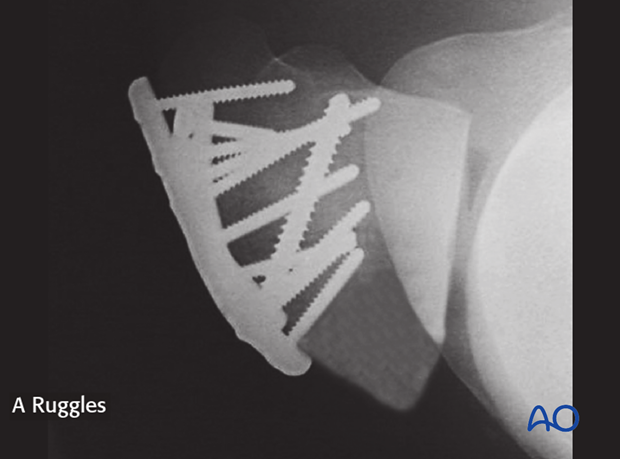Screw/Plate fixation
1. Indications
Complete moderately to severely displaced fractures are indications for surgery.
In these cases the patellar fascia is disrupted, the horse cannot fix the stifle and is therefore non weight bearing. The severity of lameness will cause angular deformities in young horses and laminitis in older horses of the weight bearing limb. Surgical fixation with plates and screws reestablishes the stay-apparatus of the hind limb to allow comfortable weight bearing and prevent secondary complications of the intact limb.
2. Preparation and approach
This procedure is performed with the patient placed in dorsal recumbency through the skin incision for patellar fractures.
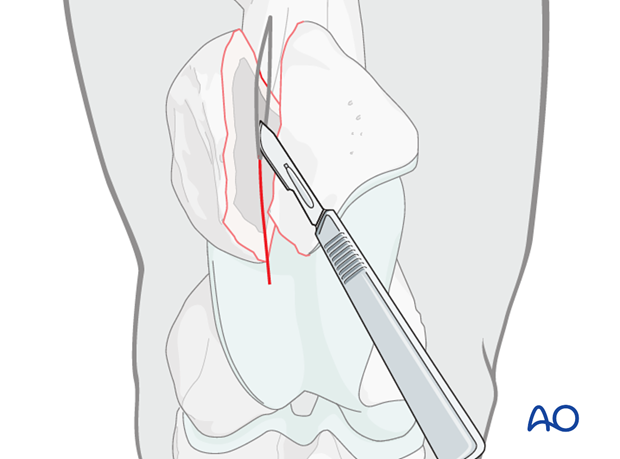
3. Principles
Because of the fact that the pull on the patella occurs in proximal direction cortex screws inserted in lag fashion are ill-suited to withstand the pulling forces of the quadriceps muscle. Some type of tension band is required to assure maintenance of fracture reduction during fracture healing period.
Plates applied to the cranial aspect of the patella in conjunction with screws is the treatment of choice.
An alternate technique involves the insertion of screws perpendicularly across the fracture plane and the application of cerclage wires or cables in figure – 8 fashion around the screw head and the protruding tip of the same screw
4. Surgical techniques
Incision
A vertical incision is made over the fracture site. The debris within the fracture is removed.

Reduction
The fracture is reduced and held in reduction with bone-holding forceps.
Articular reduction can be confirmed arthroscopically if elected.
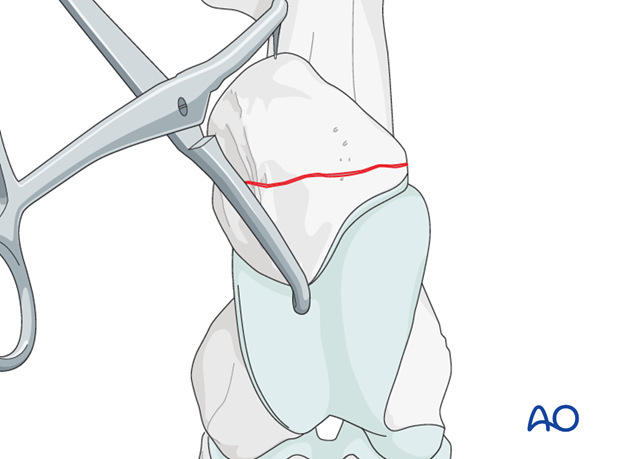
Fixation: Lag screws
4.5 mm or 5.5 mm cortex screws placed in lag fashion can be used to repair sagittal displaced fractures of the patella.
At least 2 screws should be used to provide rotational stability.
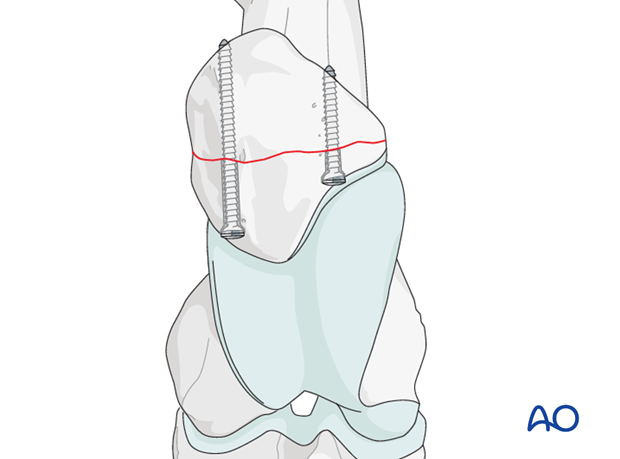
Pearl: Radiographic control and/or retrograde drilling of the glide holes will ensure that the implants are placed parallel to the joint surface and reduce the risk of perforating the articular surface with instruments or implants.
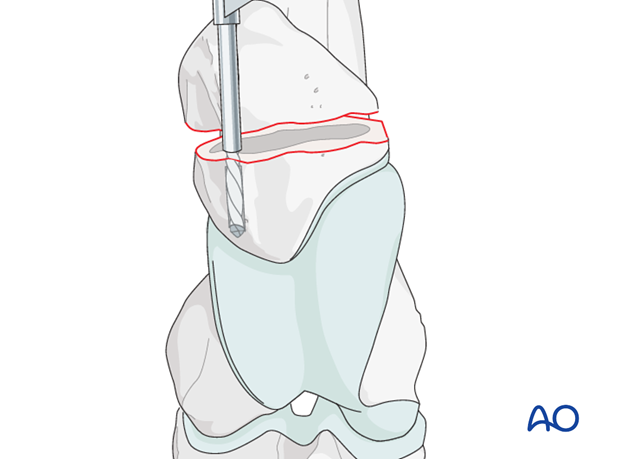
Fixation: Screws and cerclage wire
4.5 mm or 5.5 mm cortex screws placed in lag fashion in distal to proximal direction can be used to repair sagittal displaced fractures of the patella.
At least 2 screws should be used to provide rotational stability.

In a next step cerclage wires are applied in figure – 8 fashion between the screw head (note the wire should be placed below the washer) and the tip of each of the two screws.
To increase the stability it is also possible to apply a cerclage wire in figure – 8 fashion from the screw head of one screw diagonally to the tip of the other screw and vice versa.
The two cerclage application types can also be combined.

Pitfall
The patella is softer than typical equine bone and it is possible that the heads of the cortex screws may penetrate the surface of the patella during tightening. In such circumstances washers placed under the screw heads are used to prevent this complication.
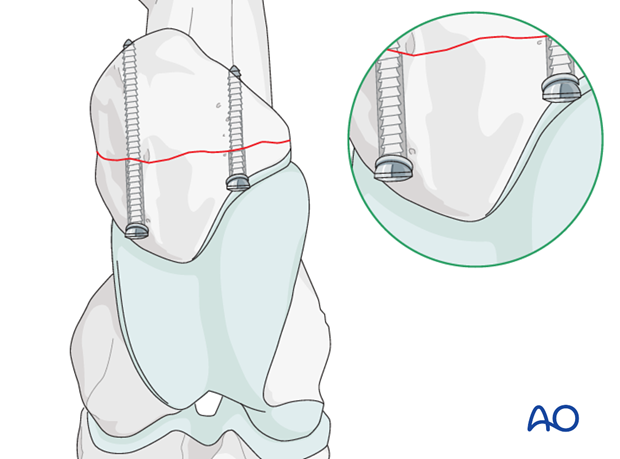
Fixation: Plate(s)
An alternate technique involves the application of one or two short narrow 3.5mm plates (DCPs or LCPs).
Standard plate application techniques are applied and care is taken to avoid penetration of the articular cartilage by the screws.
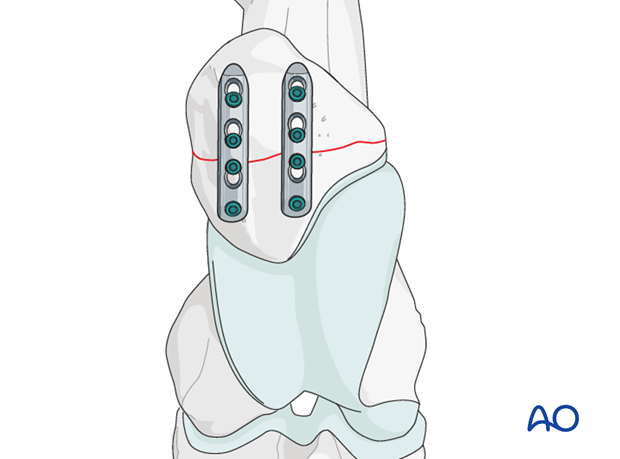
Postoperative lateromedial radiographic view of a horizontal patella fracture repaired with two 5-hole 3.5mm DCPs and one oblique 4.5mm cortex screw.
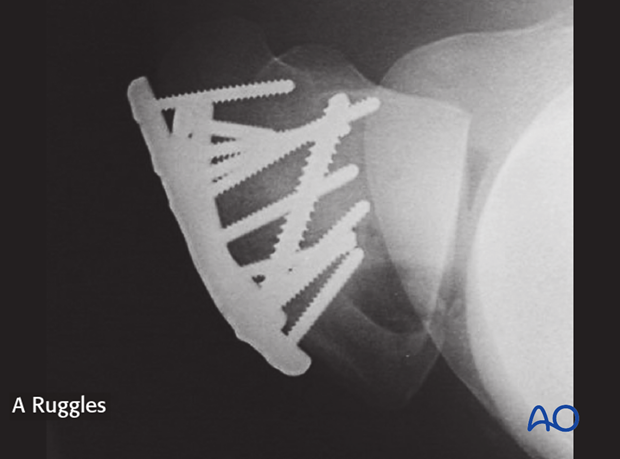
5. Closure
Closure is performed carefully to apply suture lines in all layers separately. Tension-relieving sutures in the skin are recommended.
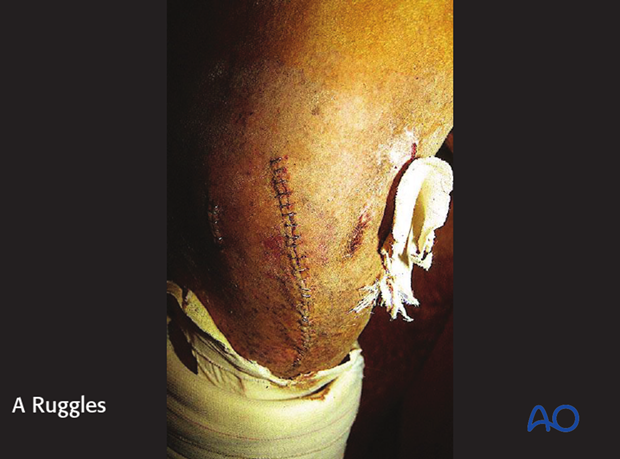
6. Overview of rehabilitation
A stent-bandage is typically applied to the surgical wound and a full-limb bandage used in the immediate postoperative period (10-14 days) to limit stifle flexion.
Pool or sling recovery systems are indicated to protect the surgical incision.
Complete stall confinement is recommended and varies based on the age of the animal. Foals typically are confined in a stall for 6-8 weeks and adult horses may be confined for as long as 4 months.
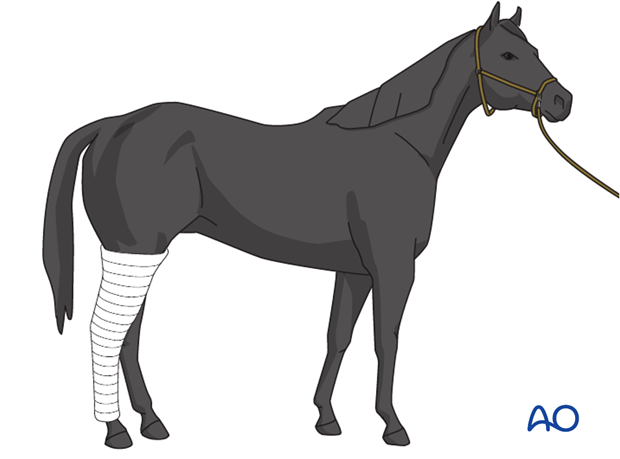
Follow-up radiographs are recommended 6-8 weeks postoperatively to assess healing and provide further exercise instructions.
